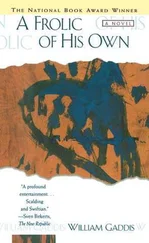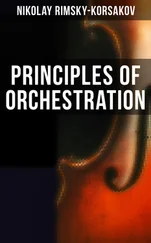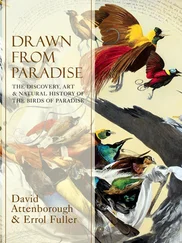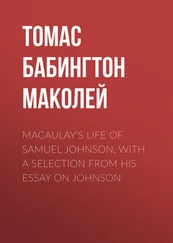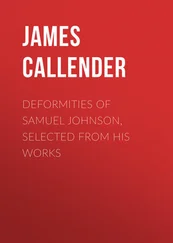The power of subtle orchestration is a secret impossible to transmit, and the composer who possesses this secret should value it highly, and never debase it to the level of a mere collection of formulæ learned by heart.
Here I may mention the case of works scored by others from the composer's rough directions. He who undertakes such work should enter as deeply as he may into the spirit of the composer, try to realise his intentions, and develop them in all their essential features.
Though one's own personality be subordinate to that of another, such orchestration is nevertheless creative work. But on the other hand, to score a composition never intended for the orchestra, is an undesirable practice. Many musicians have made this mistake and persist in it. [4]In any case this is the lowest form of instrumentation, akin to colour photography, though of course the process may be well or badly done.
As regards orchestration it has been my good fortune to belong to a first-rate school, and I have acquired the most varied experience. In the first place I have had the opportunity of hearing all my works performed by the excellent orchestra of the St. Petersburgh Opera. Secondly, having experienced leanings towards different directions, I have scored for orchestras of different sizes, beginning with simple combinations (my opera The May Night is written for natural horns and trumpets), and ending with the most advanced. In the third place, I conducted the choir of the Military Marine for several years and was therefore able to study wind-instruments. Finally I formed an orchestra of very young pupils, and succeeded in teaching them to play, quite competently, the works of Beethoven, Mendelssohn, Glinka, etc. All this has enabled me to present this work to the public as the result of long experience.
As a starting-point I lay down the following fundamental axioms:
I. In the orchestra there is no such thing as ugly quality of tone.
II. Orchestral writing should be easy to play ; a composer's work stands the best chance when the parts are well written. [5]
III. A work should be written for the size of orchestra that is to perform it , not for some imaginary body, as many composers persist in doing, introducing brass instruments in unusual keys upon which the music is impracticable because it is not played in the key the composer intends.
It is difficult to devise any method of learning orchestration without a master. As a general rule it is best to advance by degrees from the simplest scoring to the most complicated.
The student will probably pass through the following phases: 1. the phase during which he puts his entire faith in percussion instruments, believing that beauty of sound emanates entirely from this branch of the orchestra—this is the earliest stage; 2. the period when he acquires a passion for the harp, using it in every possible chord; 3. the stage during which he adores the wood-wind and horns, using stopped notes in conjunction with strings, muted or pizzicato ; 4. the more advanced period, when he has come to recognise that the string group is the richest and most expressive of all. When the student works alone he must try to avoid the pitfalls of the first three phases. The best plan is to study full-scores, and listen to an orchestra, score in hand. But it is difficult to decide what music should be studied and heard. Music of all ages, certainly, but, principally, that which is fairly modern. Fairly modern music will teach the student how to score—classical music will prove of negative value to him. Weber, Mendelssohn, Meyerbeer ( The Prophet ), Berlioz, Glinka, Wagner, Liszt, and modern French and Russian composers—these will prove his best guides. It is useless for a Berlioz or a Gevaert to quote examples from the works of Gluck. The musical idiom is too old-fashioned and strange to modern ears; such examples are of no further use today. The same may be said of Mozart and of Haydn (the father of modern orchestration).
The gigantic figure of Beethoven stands apart. His music abounds in countless leonine leaps of orchestral imagination, but his technique, viewed in detail, remains much inferior to his titanic conception. His use of the trumpets, standing out above the rest of the orchestra, the difficult and unhappy intervals he gives to the horns, the distinctive features of the string parts and his often highly-coloured employment of the wood-wind,—these features will combine causing the student of Beethoven to stumble upon a thousand and one points in contradiction.
It is a mistake to think that the beginner will light upon no simple and instructive examples in modern music, in that of Wagner and others. On the contrary, clearer, and better examples are to be found amongst modern composers than in what is called the range of classical music.
Extract from the Preface to the last edition.
Table of Contents
My aim in undertaking this work is to reveal the principles of modern orchestration in a somewhat different light than that usually brought to bear upon the subject. I have followed these principles in orchestrating my own works, and, wishing to impart some of my ideas to young composers, I have quoted examples from my own compositions, or given references to them, endeavouring to show, in all sincerity, what is successful and what is not. No one can know except the author himself the purpose and motives which governed him during the composition of a certain work, and the practice of explaining the intentions of a composer, so prevalent amongst annotators, however reverent and discreet, appears to me far from satisfactory. They will attribute a too closely philosophic, or excessively poetic meaning to a plain and simple fact. Sometimes the respect which great composers' names command will cause inferior examples to be quoted as good; cases of carelessness or ignorance, easily explained by the imperfections of current technique, give rise to whole pages of laborious exposition, in defence, or even in admiration of a faulty passage.
This book is written for those who have already studied instrumentation from Gevaert's excellent treatise, or any other well-known manual, and who have some knowledge of a number of orchestral scores.
I shall therefore only just touch on such technical questions as fingering, range, emission of sound etc. [6]
The present work deals with the combination of instruments in separate groups and in the entire orchestral scheme; the different means of producing strength of tone and unity of structure; the sub-division of parts; variety of colour and expression in scoring,—the whole, principally from the standpoint of dramatic music.
Table of Contents
Chapter I. GENERAL REVIEW OF ORCHESTRAL GROUPS.
Table of Contents
The following is the formation of the string quartet and the number of players required in present day orchestras, either in the theatre or concert-room.
|
Full orchestra |
Medium orchestra |
Small orchestra |
| Violins I |
16 |
12 |
8 |
| " II |
14 |
10 |
6 |
| Violas |
12 |
8 |
4 |
| Violoncellos |
10 |
6 |
3 |
| Double basses |
8-10 |
4-6 |
2-3 |
In larger orchestras, the number of first violins may amount to 20 and even 24, the other strings being increased proportionately. But such a great quantity of strings overpowers the customary wood-wind section, and entails re-inforcing the latter. Sometimes orchestras contain less than 8 first violins; this is a mistake, as the balance between strings and wind is completely destroyed. In writing for the orchestra it is advisable to rely on a medium-sized body of strings. Played by a larger orchestra a work will be heard to greater advantage; played by a smaller one, the harm done will be minimised.
Читать дальше

